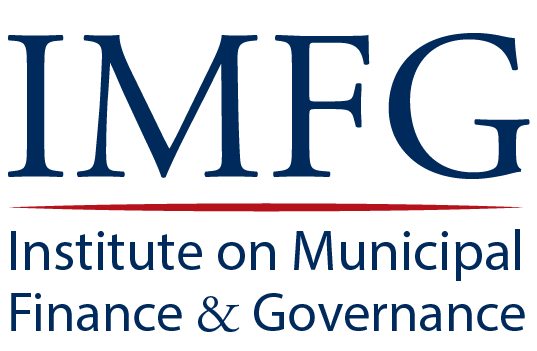Nearly a decade ago, the Institute on Municipal Finance and Governance (IMFG) published my paper, Cost Overruns on Infrastructure Projects: Patterns, Causes, and Cures.[1] The paper was in many ways a cri de cœur, written in the language of academia. I have always been drawn to big, ambitious infrastructure projects, not just their technological and engineering marvels, but the way that, if done well, they form the basis for sustainability, economic prosperity, social equity, and a high quality of life.
Yet megaprojects have an Achilles heel: they invariably go over budget and miss deadlines. This trend represents not only a colossal waste of money, but it also erodes public trust in the power of governments to solve complex challenges. In my beloved hometown of Toronto, I have seen one big ambitious project after another go sideways. In 2015, blown budgets in the redevelopment of Union Station and the Spadina Subway extension to York University and Vaughan were capturing the public’s attention.
I had become all too familiar with what I thought of as the performative “mad-as-heck” routine, the typical public response of politicians and project executives when announcing another cost overrun or delay. In the IMFG paper, I used a quote from then Toronto Mayor John Tory that he was “furious that this happens over and over again.” But I could have quoted any number of other leaders at the time responding to the failings of their projects.
To channel my own frustration at the situation, I drew on the best scholarly evidence then available to explain how prevalent cost overruns were, identify their root causes, and describe solutions used in other countries to address the problem. The IMFG paper was an attempt to give Canadian leaders a playbook to understand and address cost overruns in a serious and evidence-based way.
In the section on the patterns of cost overruns, I showed that Toronto and Ontario were far from alone in facing mega cost overruns on megaprojects. It was a global problem, common to big projects in all major infrastructure sectors. The causes I identified, based on the literature, were a mix of technical difficulties, optimism biases, and strategically misleading behaviour by politicians to advance preferred projects. Individuals and organizations tend to overestimate their own skill and the level of control they have over a project outcome while downplaying risks. At the same time, there are many incentives for politicians and firms to deliberately underestimate project budgets to gain public support, receive approvals, or win a contract, as projects are rarely cancelled once construction begins.
In proposing solutions, I emphasized that the world was in the midst of a data revolution in which enhanced performance monitoring and predictive analytics could detect problems early on and help improve delivery. I was a few years too early for the artificial intelligence (AI) revolution, but the seeds were there. I also suggested creating systems to reward good performance by contractors, enhancing public-sector management capabilities through the creation of leadership training programs as done in the United Kingdom, applying state-of-the-art forecasting techniques, and selectively using public-private partnerships that were more limited in scope than those typical of the time.
Fast forward nearly a decade. The more things change, the more they remain the same. The projects under scrutiny may have changed, but alas, the situation is largely the same. Today it is the Eglinton Crosstown, Finch LRT, and Ottawa LRT that symbolize project delivery mismanagement. And politicians and infrastructure executives continue to express outrage at the fact that prominent megaprojects are late and over budget.
Few of the tangible steps recommended in the IMFG paper 10 years ago to reduce cost overruns have been meaningfully acted upon. There is no systematic performance monitoring or information sharing across the sector. No structured system has been created to reward good contractor performance in procurement. Forecasting remains opaque and project documents are sometimes released after, rather than before decisions are announced. The U.K.-style training academy model for leaders of major projects has been launched in Australia and Hong Kong, but not in Canada – yet. There is industry and academic interest in developing such an academy in Toronto, so perhaps we shall see some progress in this area.
One change is that the fully bundled, design-build-finance-operate-maintain–style public-private partnerships so popular in the early 2010s have fallen out of favour. They are too expensive, and the risk transfer mechanisms have not held up when stressed, leading to increased costs. In many cases it has been the private sector that has pulled back from these fixed-price contracts for complex megaprojects, finding that the risks of major cost escalations were simply too great.
There is considerable industry uncertainty about what will come next. Governments are increasingly unbundling contracts into smaller pay-for-performance packages and using models such as progressive design-build and alliances that use joint management and deep collaboration between the parties to share rather than transfer risk. Time will tell whether these emerging models deliver better results.
Meanwhile, academics have begun to study not only cost overruns, but the comparative cost per unit of building infrastructure. In other words: how much does it cost to build a kilometre of rail or a square foot of a hospital, and how do these costs compare across projects or jurisdictions? The insights from this research will be important, because a project could have a small overrun or be built under budget but still not deliver value for money if the initial budget was heavily padded. By comparison, a project with a lean initial budget could have a large cost overrun, but still be cheaper overall than a project where there was no overrun, but the initial budget was inflated.
Cost overruns continue to plague large infrastructure projects in Canada. And Canada has been identified as a high-cost jurisdiction for building infrastructure, just as we are seeing the biggest building boom in a generation.
While procurement models are evolving, Canada has not adopted other tools and techniques to improve infrastructure project delivery and cost certainty. For Canadians, a key question endures – when will we stop the charade of being upset with over-budget, late megaproject delivery, and take real steps towards reform? We can only hope that in another 10 or 20 years’ time, we are not still having the same conversation.
About the Author
Matti Siemiatycki is a leading expert in infrastructure planning and policy. As a Professor of Geography and Planning and Director of the Infrastructure Institute at the University of Toronto, his work focuses on delivering large-scale infrastructure projects, evidence-based infrastructure investment decisions, and the effective integration of infrastructure into the fabric of cities. Matti consults widely on infrastructure policy and is a frequent media commentator on infrastructure and city planning.
Endnotes
[1] Matti Siemiatycki, Cost Overruns on Infrastructure Projects: Patterns, Causes, and Cures, IMFG Perspectives No. 11, 2015.
Footnote
Click to scroll to footnotes


